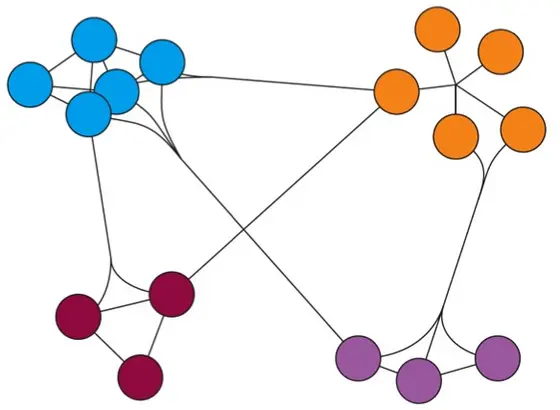Cancer is a disease of the genes. However, it is not just individual cancer genes that are altered in tumor cells, but they usually have multiple mutations. The exact combination of these mutations determines the cells’ behavior such as growth or response to therapy. But this is exactly what is often impossible to predict. In order to be able to successfully combine therapies directed against individual alterations in cancer cells, scientists first need to understand how the altered genes impact each other.
In an effort to answer this question, scientists from the German Cancer Research Center (Deutsches Krebsforschungszentrum, DKFZ), the University of Heidelberg and the European Molecular Biology Laboratory (EMBL) in Heidelberg have developed a new method. They aim to study on a large scale how genes interact with each other, i.e., how they amplify or neutralize each others’ effects. The interaction profiles of genes work much like in social networks: If two people have many friends in common, the odds are that those two people know each other well. Likewise, two genes with similar interaction profiles are likely to be closely cooperating. This makes it possible to obtain complete lists of cooperating genes. Similar methods have already been developed for model organisms such as yeast and the fruit fly. Now the researchers have been able for the first time to apply this method in human cancer cells.
The scientists focused their attention primarily on genes that influence a mechanism called epigenetic regulation. “These genes control the activity of other genes and have an impact on the structure of chromosomes. Hence they play an important role for correct cell division and are therefore interesting for cancer research," says DKFZ’s Michael Boutros. “Our method enables us to find out how these epigenetic factors impact each other in their effects."
“For this purpose, we silenced 323 epigenetically active genes one at a time and also in combinations," Christina Laufer, first author of the article, describes their research approach. The project had extraordinary dimensions, amounting to over 50,000 individual experiments in total. In order to observe how combined silencing affects cancer cells, the researchers dyed various cellular structures such as the nucleus and the cytoskeleton and took pictures of all cells. They thus obtained more than 600,000 pictures in total.
“Of course, one cannot analyze such an amount of pictures with the eye," Wolfgang Huber from EMBL explains. “We used a special image processing method by which we have automated the analysis process." The software facilitated identifying the consequences of the genetic manipulations within a short time.
“We were able to confirm that our method is excellently suited for mapping genetic interactions," says Michael Boutros. “In order to understand the differences between a cancer cell and a normal cell, we have to know these interactions. This is the basis we need in order to interfere selectively with a process and thus to develop better drugs in more effective combinations to treat cancer."
The project was funded by the German Research Foundation (DFG) as part of the CellNetworks excellence cluster. Michael Boutros is a departmental head at DKFZ and the Medical Faculty Mannheim of Heidelberg University. Wolfgang Huber is a Senior Scientist and group leader at EMBL.
Laufer C, Fischer B, Billmann M, Huber W, Boutros M. Mapping genetic interactions in human cancer cells with RNAi and multiparametric phenotyping. Nature Methods 2013, DOI: 10.1038/nmeth.2436



